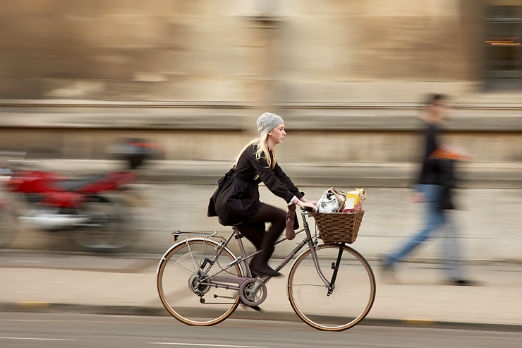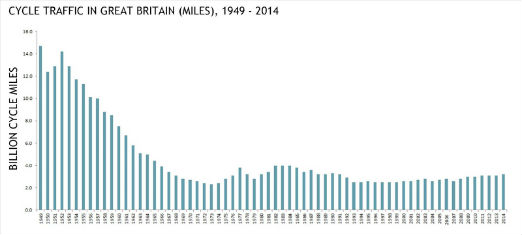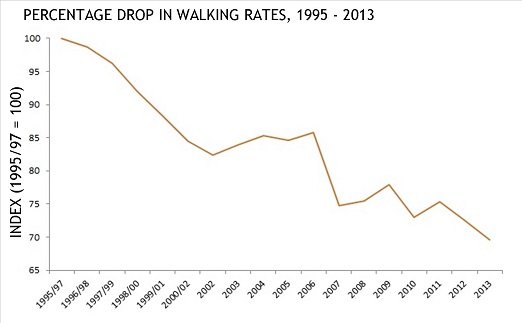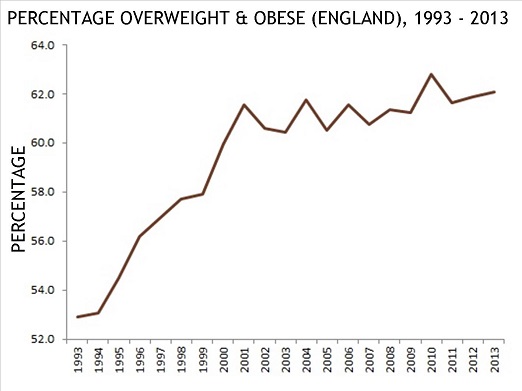This year CPRE secured a commitment for England’s first Cycling and Walking Investment Strategy.
Ensuring healthy growth for cycling and walking
 Cycling and walking in Oxford
Photo: © Kamyar Adl
Cycling and walking in Oxford
Photo: © Kamyar Adl
It wasn’t easy,  but after thousands of CPRE members and supporters wrote to their MP to demand it, the Government finally agreed to include it in the Infrastructure Act 2015. It means there must now be the same long-term strategic thinking for walking and cycling as there is for major roads.
but after thousands of CPRE members and supporters wrote to their MP to demand it, the Government finally agreed to include it in the Infrastructure Act 2015. It means there must now be the same long-term strategic thinking for walking and cycling as there is for major roads.
The latest figures released by the Department for Transport (52K Excel) clearly show why an investment strategy is needed. Cycling rates are going up but growth continues to be painfully slow.

Source: Department for Transport, 2015
In spite of the recent rise, the truth is that cycling rates in England have been stubbornly low for some time. Outside of a handful of well-cycled cities like Cambridge and Oxford we’re still far behind most other countries in Europe and, quite frankly, if our cycling table was the qualifiers for the Euros then the manager would be getting the sack. But that’s unsurprising when so little has been done to make cycling a better option in much of England.
Walking rates do not fare any better. In fact they have tumbled by 30% between 1995 and 2013.

Source: Department for Transport - National Travel Survey: England, 2013
This really is a seismic drop in walking rates but it could well be where cycling rates are headed. With the Local Sustainable Transport Fund ending next year, funding for cycling is about to drop off a cliff. If that happens, the small progress made on cycling in recent years may be short lived.
What’s more worrying is that this would not be a funding drop from a generous level but from an already astonishingly low one. Spending in England, outside London, is just £2 per head. This is a level the All Party Parliamentary Cycling Group described as ‘far too low to seriously increase cycling levels’. Their call for a cycling budget of at least £10 per head, later rising to £20, seems a very long way off at present.
But so far the graphs have shown things tumbling down. And yet some of the rising trends are the most worrying.
Below is the combined percentage of overweight and obese people in England.

Source: Health Survey for England, 2013 (772K Excel)
By 2013 almost two-thirds of adults were either overweight or obese. This has led to the UK being dubbed the ‘fat man of Europe’ by the Academy of Medical Royal Colleges in a report on the nation’s obesity crisis .
But the really worrying link is between inactivity and 1 in 6 deaths in England, which, as noted by Public Health England, is the same number as smoking.
These really are astonishing statistics. They paint a picture of a country that is increasingly inactive and overweight, and really suffering the associated health consequences.
This is a very long way from the vision that CPRE is trying to realise by 2026, our centenary year. In this vision people in both town and country recognise the health benefits the countryside has to offer. Children engage much more with nature and people walk and cycle more.
This vision is not one where England’s countryside is preserved in aspic. It’s a vision of a beautiful, living - and active - countryside. This is why CPRE places such a high value on active travel, like walking and cycling .
We need to see a healthy rise in funding and support for cycling and walking. The benefits are clear and CPRE’s vision for a beautiful, living and active countryside will be much closer to becoming a reality.



